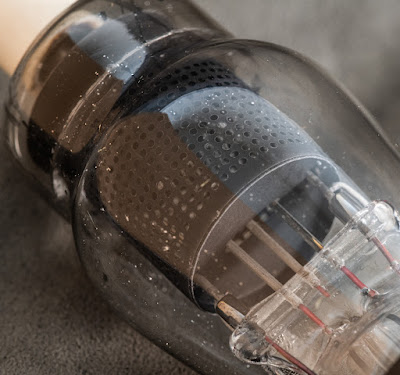Hi!
For all the mercury vapour friends out there, this months tube is a thyratron, the 394A.
Thyratrons are basically rectifiers with a control grid through which the output voltage can be regulated. The 394A is mercury filled.
In September 2020 I already showed a thyratron, the
323B. The 394A is a smaller thyratron with the advantage of much lower filament current. While the 323B eats a whopping 7A, the 394A lights up with 3.25A. It still can deliver a lot of current. The
data sheet specifies an average current of 640mA for one tube and it can handle short peaks of 25A for periods of 100ms. More than enough for most audio applications. As with the 323B you can simply skip the control capability and just use the control grid (which actually is a cage around the filament) as plate and leave the actual plate, which is at the top cap, unused. I have never used thyratrons in audio projects but there are some reputable audio designers out there who love them. Of course the blue glow they give off is always a show.
Here we have a bunch of 394A made by Electronic Enterprises Inc:
These came in military packaging.
Some close ups:
Western Electric 394A:
And now some blue glow.
The pictures above are with the high voltage applied to the actual plate. Below with the control grid used as plate:
I hope you enjoyed the presentation of this beautiful tube.
Best regards
Thomas































For a few years I used a pair of 394A with grid as anode (together with 6AX4 to ground for slow start up) in your E55L phono. Just recently that changed to DCG1/250.
ReplyDeleteBest regards,
Daniel
does the blue glow have to be solid? I use two on my amp, one has a faded color…. is it okay too?
ReplyDeleteThat depends on the power draw. Measure the resulting output voltage and if it meets the expected value all is ok.
Delete